Once ubiquitous but now rare, the Vauxhall Astra Mk4 is an icon of the early-2000s pre-SUV family car era. Here’s how to buy a great one
Words: Chris Randall Images: Paul Wager
Today’s buyers want crossovers and SUVs, but go back a couple of decades or so and the family hatchback market was where the real action was. 1998 saw Ford change the game with its new Focus – the competition struggling to match the style and excellent driving experience – but the same year saw the arrival of the fourth generation Astra.
A touch conservative next to the Ford, it was still a sound effort with smart looks and much-improved ride and handling compared to its predecessor. It was also safer than before with a four-star Euro NCAP rating, and a broad range of variants meant there was a model for every taste and budget; buyers could choose from hatchback, saloon, spacious estate, or Bertone-styled coupe and convertible versions.
And performance fans weren’t forgotten thanks to the GSi that boasted 197bhp from its turbocharged engine. It cracked the 0-62mph sprint in 7.0 seconds and topped-out at 150mph, while the body-kit and lowered suspension ensured it looked the part. There was also a rare Coupe 888 that celebrated Vauxhall’s 2001 BTCC title, with just 100 made. While the coupe and convertible lasted a little longer the rest of the range bowed out in 2004, so what’s this Astra like to buy twenty years later?
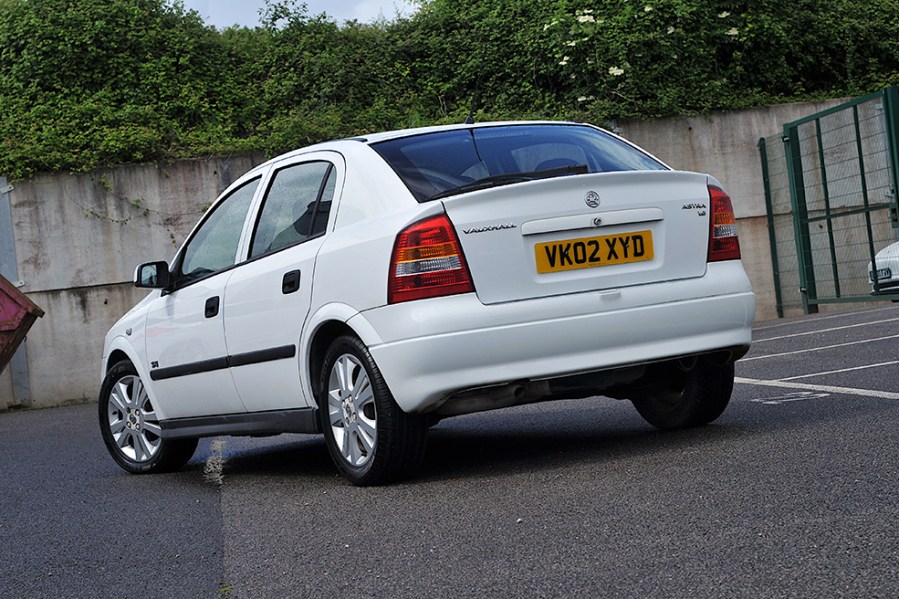
Bodywork
There are plenty of cars from this period that have already succumbed to corrosion to one degree or another but the Astra fares pretty well in this respect. The most common spot for rust to break through is the rear wheelarches, so give them a thorough examination, but a general check of the other panels will suffice.
What’s more important is assessing overall condition, looking for the usual signs of abuse and neglect such as dents and scrapes, damaged bumpers and broken mirrors and light units. It’s not the end of the world as second-hand bits are plentiful and cheap, but the affordability of smart examples means there’s little need to end up with something scruffy. It’s reasonable to assume that the hotter versions got driven a bit harder, so you’ll want to ascertain whether the history contains a record of accident repairs.
The other variant of note is the convertible (although not many are for sale) and it’s a wise move to check that the hood and its operating mechanism are in sound condition. It opens and closes electrically and you’ll want to ensure it does both of those things smoothly with no sign of it getting stuck at some point in the operation. It may just need re-calibrating if not, but if that doesn’t cure the problem things could start to get expensive.
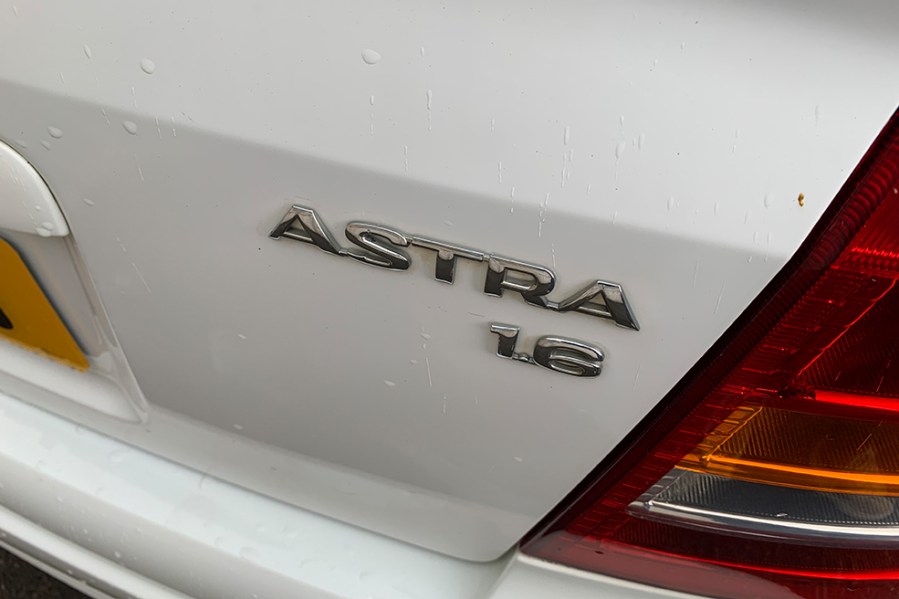 Engine and transmission
Engine and transmission
There was no shortage of choice when it came to engines, with a broad range of 8- and 16-valve petrol units spanning 1.4- to 2.2-litres. The smaller ones were modest performers, but opt for one of the larger capacity or turbocharged motors and things feel much more lively. And for those wanting better economy the 1.7- and 2.0-litre diesels were usefully frugal and could cover big mileages with proper care, although it’s hard to see why you’d want to take the oil-burning route with one of these Astras today. If you do then make sure the fuel system is leak free, that exhaust smoke isn’t excessive and that blocked a EGR valve isn’t causing trouble.
The petrol engines make far more sense and it’s essentially a case of ensuring that servicing hasn’t been completely neglected. A record of regular oil and coolant changes is good news, and with online motor factors able to supply service items at affordable prices and nothing to worry the competent DIY mechanic there’s little excuse for ignoring basic maintenance. Petrol engines can burn a bit of oil, so check the level.
Most important is evidence of cam belt changes; it’s normally due at around 40k miles and if you want to tackle it yourself a kit is £100–120, plus a little more for a new water pump which you should replace at the same time. 2.2-litre engines had a timing chain so check for rattles, and while early examples could suffer from lubrication issues it was cured with a modified set-up and it’s unlikely to be a problem on any models you’ll find today.
The turbocharged engine in the GSi will need more careful scrutiny, ensuring that the turbo itself is healthy and that there’s no sign of the unit burning oil. It may have been modified, too, so if you suspect that’s the case be sure to establish what’s been done and how well. Any car of this age has the potential to suffer from engine management system issues, be that the ECU itself or the various sensors, so use the test drive to check for the presence of warning lights or that the engine isn’t running as smoothly as it should. Diagnosing and curing faults can become a bit of a pain, and you’ll be better off finding another car to buy. Lastly, Vauxhall offered an LPG-fuelled version but it’s a rarity nowadays.
As for the manual or automatic gearboxes, there’s not a great deal to worry about other than carrying out the usual checks for unpleasant noises or a less than perfect shift action. Performance variants could have led a harder life so spend extra time checking those, and ensure the clutch operation feels okay.

Suspension, steering and brakes
Before going any further there’s an important check to make, and that’s the state of the front subframe. It can succumb to serious corrosion, so don’t be satisfied until you’ve checked every inch of the metal, looking not only for rust but for plated repairs or fresh underseal hiding horrors beneath. Replacement is a time-consuming job, and labour costs can mount if you’re paying a garage to do it.
The suspension, then, and by current standards these Astras wouldn’t win any awards for their ride and handling, but – excellent Ford Focus aside – they were more than competitive with contemporary rivals, and an example in sound condition will still feel capable today. The straightforward set-up doesn’t present any obvious problems, so you’ll just need to check a potential purchase for the likes of tired dampers, broken springs and bushes in need of replacement; clunks and rattles are the giveaway for the latter. Parts are cheap and easy to source if an overhaul is needed. GSi models sat 20mm lower and the suspension was notably stiffer (although the ride was nothing like as tooth-loosening as many of today’s cars), and it’s advisable to check whether there’s been any further modifications.
The hydraulically-assisted steering is essentially trouble-free but watch for signs of fluid leaks and listen out for a noisy pump. As for the brakes there shouldn’t be much to worry about here, either. It was a thoroughly conventional arrangement, and aside from the usual issues of worn pads and discs and checking that the ABS system is okay the only real thing of note is the potential for sticking rear calipers. Lowlier models sported steel wheels with plastic trims (consider it a bonus if original items are still present) while the alloys of higher-spec versions need the usual examination for corrosion and kerb damage.
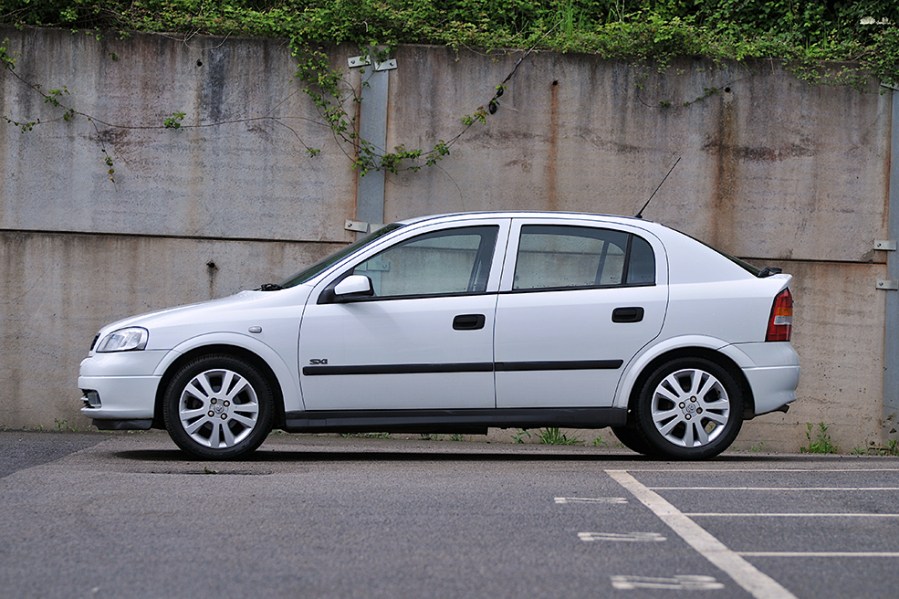
Interior, trim and electrics
Vauxhall upped its game when it came to their new Astra, and the interior build quality was a notable improvement compared to the Mk 3. There were plenty of trims levels to choose from, too, and while entry-level Envoy and Club models felt a bit Spartan the rest boasted all the convenience features you needed. Equipment levels were improved from 2000 with the likes of remote locking, air-conditioning and better audio featuring on most versions.
Fast forward to today, and condition is more important than specific model and it won’t take long to assess the state of the interior. Look out for the usual signs of damaged seats and scuffed plastics, although assuming it’s not too decrepit a session with cleaning products should smarten things up. The GSi got half-leather sports seats and a decent trimmer can sort worn bolsters.
The electrics aren’t notably bothersome, but it makes sense to spend a bit of time checking that everything still works as previous owners may have just learned to live with inoperative equipment. Second-hand bits will keep repair costs down. Lastly, leaks from around the bulkhead caused damp so check the front footwell carpets, and make sure a convertible interior is dry.
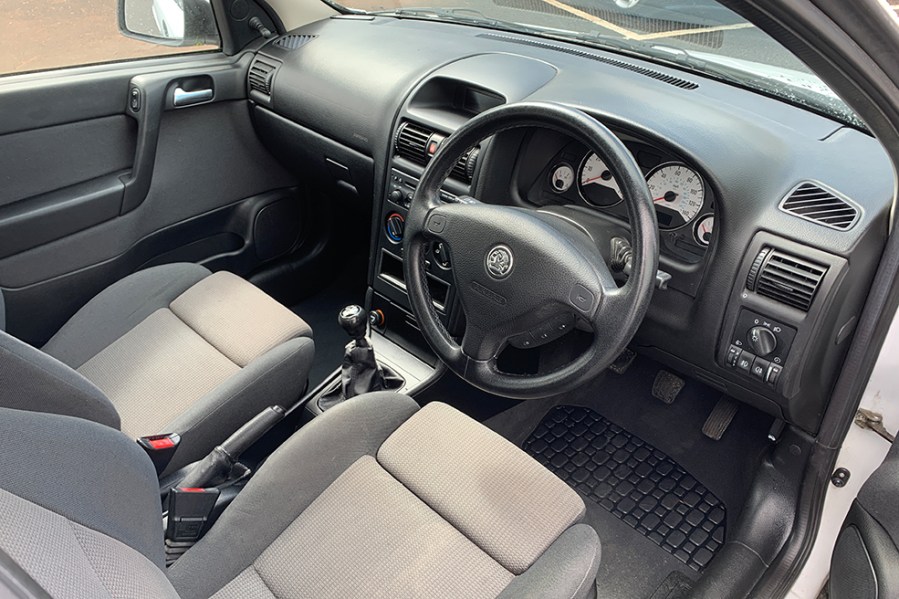
Vauxhall Astra Mk4: our verdict
Even the most ardent of Vauxhall fans would admit that a ‘cooking’ model isn’t going to set the pulse racing, but if you’re after an affordable and capable runabout then there’s a lot to like about this generation of Astra. Spacious, practical, decent to drive and generally less rust-prone than some of its rivals it makes for a perfectly pleasant family car.
And if you want an added dash of style or performance it can do that, too; coupe and GSi variants are definitely in modern classic territory as far as we’re concerned. You won’t have to break the bank if this generation of Astra floats you’re boat, but numbers will only continue to dwindle so don’t leave it too long.
If you want to get your hands on a Mk 4 then you won’t need to spend much. For real budget motoring high-mileage hatchbacks can be found for around £500, but spend up to £1200 and you can bag something a bit nicer and with around 90k miles on the clock. This is also the point where coupes and convertibles can be found, but expect a high mileage.
At £2000–2500 you’re looking at smart hatches and coupes with sub-100k on the clock, and while hatches out there can carry £3000–4000 price tags there’s really no need to spend that much for a nice example. The priciest convertible we found was £5000, but we struggled to track down any turbocharged GSi models so you’ll have to search hard if you’re heart’s set on a hot Vauxhall.
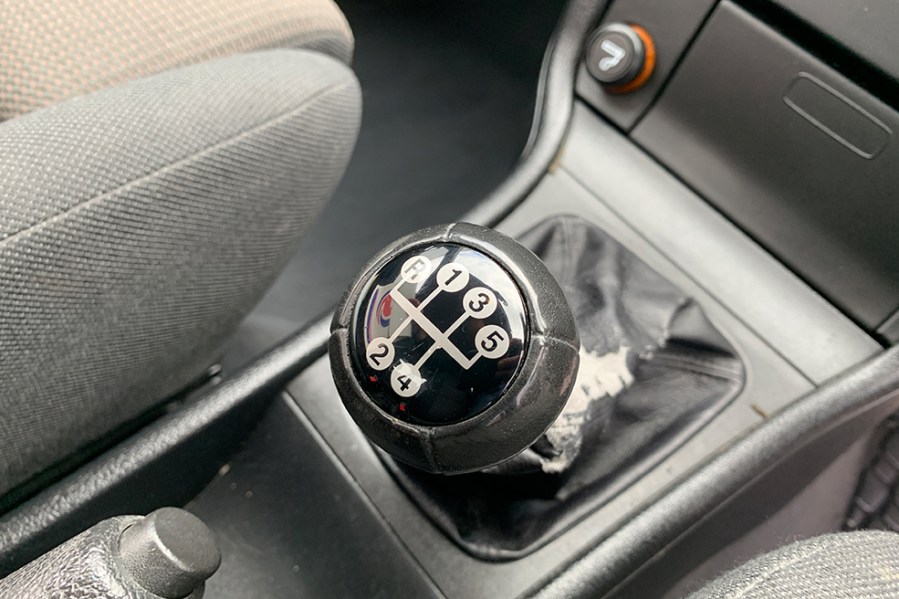
Vauxhall Astra Mk4 timeline
1998
The new Astra is launched in the spring with a choice of hatchback or estate body styles. The sportier SRi follows later in the year, along with saloon and LPG-fuel variants.
2000
The Bertone-styled coupe and convertible are added to the range, while other models see revisions to power outputs and equipment levels. There’s a new direct-injection 1.7 diesel, too. Another highlight is the Astra Coupe 888 that gets more aggressive looks, OZ wheels, and Eibach suspension.
2002
The hot GSi model is added to the range. There’s plenty of straight-line performance from the 197bhp turbocharged engine, plus a body kit and a sportier interior. Other models get further tweaks to trims and equipment levels, and Vauxhall’s first common-rail diesel engine is offered.
2004
Mk4 generation is replaced by the new Mk5 Astra, although some versions remain on sale until the 2005/06 model year.
Thanks to Racing Line car sales of Winsford, near Bristol for supplying the 2002 Astra SXi in our photos. An incredibly original two-owner example showing just 94,000 miles, it’s currently for sale at £1990 and you’ll find more details at racinglinebodyworks.com























